|
Truck Bombs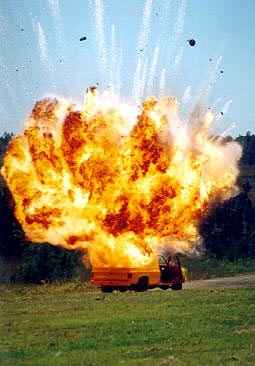 When the explosion went off in the heart of Manhattan's financial district, the scene was gory and the people were stricken with terror. Body parts were strewn everywhere, and the streets literally ran with blood. Police and rescue workers mobilized in unheard of numbers, rushing to the scene and heroically attempting to help the wounded and count the dead.
When the explosion went off in the heart of Manhattan's financial district, the scene was gory and the people were stricken with terror. Body parts were strewn everywhere, and the streets literally ran with blood. Police and rescue workers mobilized in unheard of numbers, rushing to the scene and heroically attempting to help the wounded and count the dead.If you guessed the month was September, you're correct. If you guessed the year was 2001, you're more than 80 years off. Although the Wall Street bombing of 1920 was carried out by a horse-drawn cart, it suffices as a jumping off point for the history of truck bombs as terrorist weapons. Anarchists were the suspected culprits in 1920 bombing, which killed 39, but no one was ever charged in the attack. Trucks are a natural delivery vehicle for explosives, since most explosives work on the "more is better" principle. During the first 60 or 70 years of the 20th Century, car and truck bombings were relatively rare events, with the exception of a few attacks around the foundation of the Israeli state.
While there are numerous competing claims, most U.S. histories designate the birth of the Modern Age of Terrorism as April 18, 1983, when a massive truck bomb blew up the U.S. embassy in Beirut, killing 63 people, including the CIA station chief.
The number of truck bombings skyrocketed in the years to come. By the end of the 1980s, al Qaeda had created a cottage industry in training potential bombers in how to instigate bigger and better forms of mayhem. Trucks were by far the best delivery mechanism for high-body-count bombings, just because of the sheer quantity of explosives they could hold. Volatile fertilizers were often the fuel, prized for both their explosive force as well as their easy availability.
Soon Yousef was ready to ply his trade outside the classroom. In September 1992, Yousef flew to New York City, where he met up with a terror cell led by blind Sheikh Omar Abdel Rahman as a joint Egyptian Islamic Jihad-al Qaeda operation. Yousef brought suitcases full of bomb-making manuals with him when he entered the U.S. Working from manuals and his own knowledge, he built a truck bomb from urea fertilizer and other components and used it to hit the World Trade Center in early 1993.
After fleeing to Pakistan, Yousef faced yet another bitter failure in 1994, when a more powerful truck bomb of his design was intercepted before it could be deployed against the Israeli embassy in Bangkok.
During the 1970s, CIA officers were taught to build ammonium nitrate bombs as part of their basic training program, according a colorful anecdote related in his memoirs by Bob Baer, a former CIA officer stationed in the Middle East. According to trial documents, Yousef had access to extensive documentation regarding the care and handling of ANFO bombs. Some of those bombs were more exotic than others. On 19 April 1995, the most visible truck bombing yet took place right in the heartland of the United States, Oklahoma City. Timothy McVeigh detonated a variation on an ANFO truck bomb in the parking garage of the Alfred P. Murrah Federal Building in downtown OKC, killing 268 and injuring thousands. A militia member and Gulf War veteran with a history of paranoid ramblings, McVeigh had built the bomb with the assistance of fellow anti-government nutjob Terry Nichols (at the very least).
(Nichols and Yousef were both on the same college campus in Cebu City, the Philippines, in November 1994. While a meeting between the two has never been conclusively proven, the number of correspondences between their travels and activities are pretty striking.) In 1998, al Qaeda used truck bombs to attack U.S. embassies simultaneously in Nairobi and Tanzania. Planned by Osama bin Laden's chief of security Ali Mohammed, the attacks killed more than 200 people. al Qaeda was relatively quiet for a while after the embassy bombings led to a great deal of unwelcome scrutiny on the terror network. But in the first months of 2001, a flurry of small truck bomb attacks showed a renewal of activity, culminating on September 11 with a decidedly non-truck-based attack. In the wake of the 9/11 debacle, al Qaeda found itself officially out of the closet. No longer able to operate from the shadows, the terror network launched an aggressive new campaign of bombings. In the Philippines, Malaysia and all around South Asia, thousands of tons of ammonium nitrate went missing, stockpiled by al Qaeda and regional affiliates like Jemaah Islamiah.
Jemaah Islamiah and al Qaeda's Pakistan affiliate Lashkar-e-Jhangvi struck repeatedly throughout south and southeast Asia using ammonium nitrate-based car and truck bombs with depressing regularity from 2001 through the present day, including a massive strike in Bali, Indonesia, which left more than 200 tourists dead. The tactic has become extremely common in Iraq since the "end of major combat operations" and the beginning of "our long national nightmare". The appeal of the truck bomb is pretty simple. They pack a devastating wallop, and they're extremely hard to defend against. If you think shutting down America's commercial air travel after 9/11 was difficult, just imagine trying to shut down commercial truck usage. You can't go a single day in any average-sized city anywhere in the world without seeing dozens of trucks drive by, any one of which could be loaded with explosives, and you'd be none the wiser until it actually blew up. Although there have been some efforts to bomb-proof buildings and courthouses in the wake of OKC and 9/11, there is only so much prevention that can be done.
The simplest way to significantly deter truck bombings would be to ban or strictly regulate the sale of ammonium nitrate, which many countries have in fact done. Another tactic is to add "taggants" to the ammonium nitrate which allow authorities to track stolen fertilizer more easily. One notable foot-dragger in implementing such reforms is the United States. Why, you ask? Well, the fertilizer is used extensively by farmers, who would be inconvenienced by tight regulations, but the real reason is much stupider than that. The NRA torpedoed a bill that would have required taggants in fertilizer and gunpowder. Do they think truck bombs are protected by the Second Amendment? Well, be it far from us to speculate on what they actually think, but their objection was based on a somewhat dubious claim that the taggants present a fire hazard... relative to the fire hazard presented by keeping large amounts of gunpowder and ammonium nitrate around the house in the first place, of course. In case you haven't figured out the bottom line by now, it is simply this: Get used to truck bombings. They aren't going anywhere soon. After all, if we change our way of life by making microscopic changes to industrial fertilizers, the terrorists win.
|
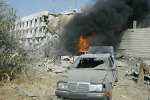 The tactic of car bombing began to be used more and more frequently in Lebanon during the 1980s. A combination of years of civil war, an Israeli invasion, and a Western "peacekeeping" force occupying the country made for a volatile and lawless environment where rival factions battled it out over religious and/or political divisions with whatever weapons were at hand.
The tactic of car bombing began to be used more and more frequently in Lebanon during the 1980s. A combination of years of civil war, an Israeli invasion, and a Western "peacekeeping" force occupying the country made for a volatile and lawless environment where rival factions battled it out over religious and/or political divisions with whatever weapons were at hand. 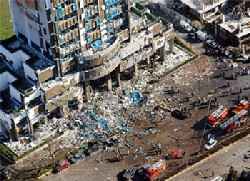 The perpetrators were never formally identified. An Islamic Jihad group claimed responsibility, but others have suggested
The perpetrators were never formally identified. An Islamic Jihad group claimed responsibility, but others have suggested 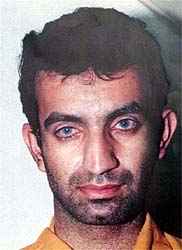 al Qaeda ran vast
al Qaeda ran vast 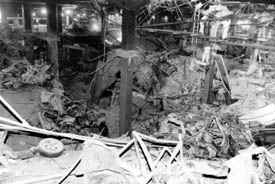 Nearly 1,000 people were injured, but only a handful were killed, to Yousef's lasting disappointment. Using Yousef's expertise and his bomb-making manuals, a second cell of NYC-based terrorists attempted to execute a
Nearly 1,000 people were injured, but only a handful were killed, to Yousef's lasting disappointment. Using Yousef's expertise and his bomb-making manuals, a second cell of NYC-based terrorists attempted to execute a  The Day of Terror and Bangkok bombs used ammonium nitrate fertilizer mixed with fuel oil (ANFO) as their primary explosive material. Ammonium nitrate had been known as a volatile substance for decades. A favorite of the Irish Republican Army, the substance had been employed as an explosive everywhere from the U.K. to the Middle East.
The Day of Terror and Bangkok bombs used ammonium nitrate fertilizer mixed with fuel oil (ANFO) as their primary explosive material. Ammonium nitrate had been known as a volatile substance for decades. A favorite of the Irish Republican Army, the substance had been employed as an explosive everywhere from the U.K. to the Middle East. 
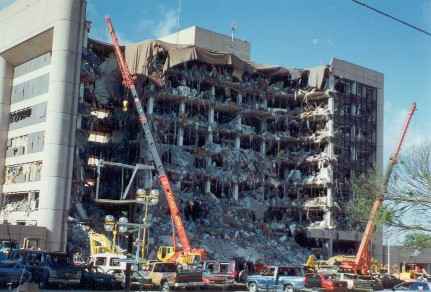 More aggressive proposals—like concrete bulwarks on sidewalks, armed checkpoints and roadblocks—are more suited to war zones than nations presumably at peace.
More aggressive proposals—like concrete bulwarks on sidewalks, armed checkpoints and roadblocks—are more suited to war zones than nations presumably at peace.